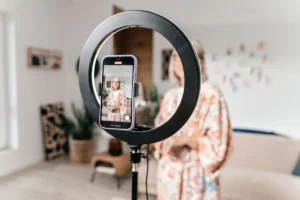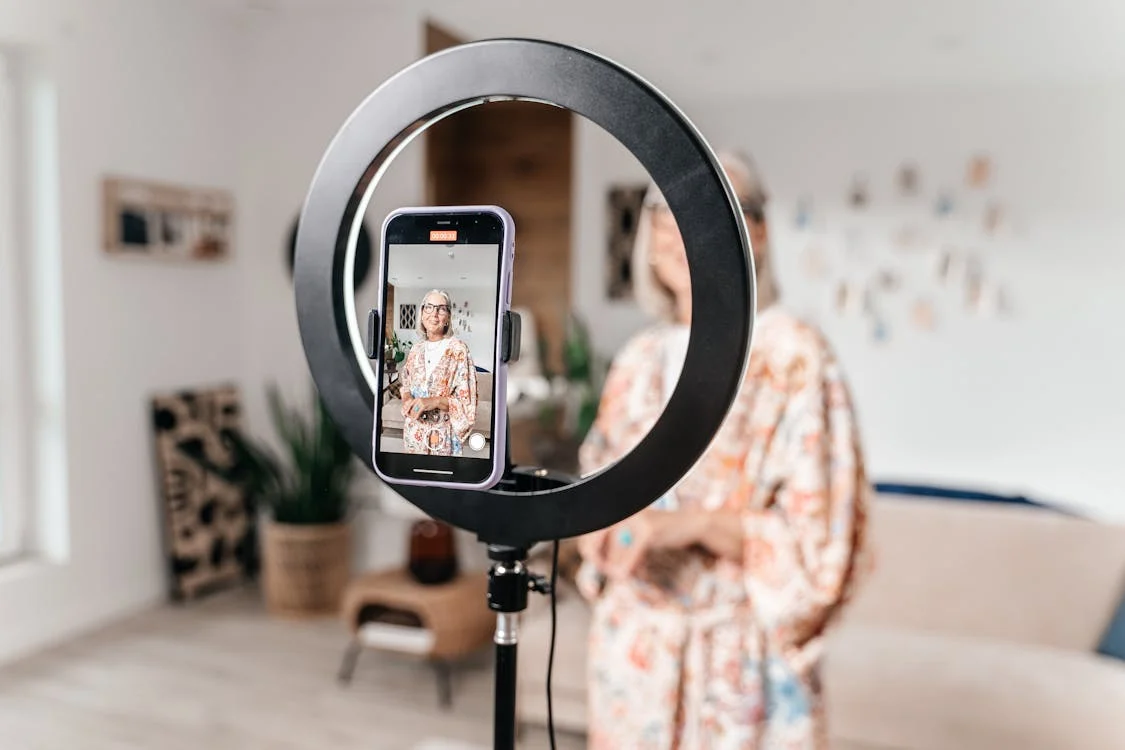What is a Self-Tape?

(Photo: Antoni Shkraba Production | Pexels)
In the world of acting and entertainment, the term “self-tape” has become increasingly common, especially with the rise of digital auditions and remote casting. But what exactly is a self-tape, and why is it such an essential tool for actors? This article will explore what a self-tape is, how it works, and why it has become a crucial part of the audition process.
1. Definition of a Self-Tape
A self-tape is a video recording of an actor performing a scene or reading lines for an audition, which is then submitted to casting directors, producers, or agents as part of the audition process. Unlike traditional in-person auditions, where actors go to a casting office or studio, a self-tape allows the actor to perform at home or in another quiet space and send their video remotely. Self-tapes are typically requested for auditions when in-person meetings are not feasible, such as for remote casting, first-round auditions, or when an actor is located far from the casting office.
2. How Does a Self-Tape Work?
The process of creating a self-tape typically involves the following steps:
- Receiving the Instructions: The actor receives the audition sides (the script or scene) and specific instructions from the casting director. These may include details on the character, tone, and context of the scene, as well as any particular requirements for the self-tape (such as a specific format or framing).
- Preparing the Scene: The actor learns the lines, understands the character, and practices the scene until they are confident with the performance. Sometimes, actors will also prepare additional materials, such as a slate (a brief introduction with the actor’s name and any other relevant details).
- Recording the Video: The actor records their self-tape, ensuring good lighting, clear audio, and framing that focuses on their performance. While the exact setup may vary, most self-tapes are shot with the actor in a simple setting, such as in front of a neutral-colored wall, to minimize distractions.
- Editing and Submission: After recording, the actor reviews the footage to ensure everything looks and sounds good. They may make minor edits, such as trimming the beginning and end of the video. Once satisfied, they send the self-tape to the casting director through a file-sharing platform or by following the submission instructions provided.
3. Why Are Self-Tapes Important?
Self-tapes have become an essential part of the modern audition process for several reasons:
- Convenience and Accessibility: Self-tapes make auditions more accessible to actors who may not be located near a major casting hub. This is especially beneficial for actors who live in smaller cities or rural areas, as they can audition for roles that might otherwise require expensive travel or time away from their other commitments.
- Flexibility for Actors: With self-tapes, actors can take their time to rehearse and record their audition when they feel ready. This contrasts with the pressure of performing live during an in-person audition, where they may not feel as comfortable or may be distracted by nerves.
- Cost-Effectiveness for Casting Directors: Self-tapes also help casting directors save time and money. Rather than scheduling a series of in-person auditions, casting teams can review multiple self-tapes at their convenience. This allows them to screen more actors for a role without the logistical challenges of arranging physical auditions.
- Wider Reach for Casting Opportunities: The ability to submit self-tapes has made it easier for actors to audition for a broader range of roles in various geographical locations. This increases the chances of landing roles, as actors can submit tapes for projects in different cities or even countries without needing to be physically present.
4. Best Practices for a Successful Self-Tape
To ensure a self-tape stands out, actors should follow a few key guidelines:
- Good Lighting and Clear Audio: Proper lighting is essential for a professional self-tape. Natural light is often ideal, but if that’s not available, soft artificial lighting can help. Ensure the microphone (whether built into the camera or external) picks up your voice clearly without distortion or background noise.
- Simple Background and Framing: Choose a neutral, uncluttered background that doesn’t distract from your performance. The camera should be at eye level and framed from the chest up, allowing the casting director to focus on your face and expressions.
- Strong Performance: Treat the self-tape like an in-person audition, giving it your best performance. This is your chance to show your range and character choices. Make sure to engage with the material and present a performance that feels authentic and grounded.
- Following Instructions: Always follow the casting director’s instructions closely, whether it’s regarding the length of the tape, specific scenes to be performed, or the submission process. Pay attention to the details to make sure you meet their expectations.
5. Common Mistakes to Avoid
While self-tapes are a great tool for actors, there are common mistakes that can hinder a submission:
- Poor Audio or Visual Quality: If the casting director can’t hear or see you clearly, it may hurt your chances. Make sure your setup is professional, with clear sound and proper lighting.
- Lack of Focus or Nerves: Sometimes, actors might rush through a self-tape, resulting in a lack of focus or a distracted performance. Take your time to ensure you’re giving your best.
- Ignoring the Instructions: Not following the casting director’s specific guidelines can lead to a self-tape being overlooked. Always double-check the requirements before submitting.
Conclusion
A self-tape is a powerful tool in the modern actor’s toolkit, allowing them to audition remotely and submit high-quality performances to casting directors worldwide. Whether you’re a seasoned actor or just starting out, understanding how to create a professional self-tape is essential to succeeding in today’s competitive entertainment industry. By following best practices and treating the process with the same care as an in-person audition, actors can showcase their talent and increase their chances of landing roles.




